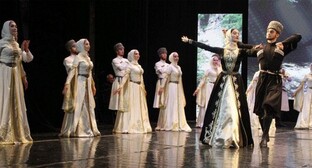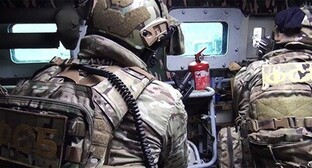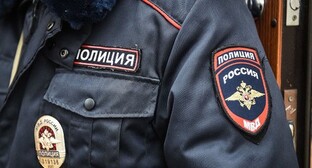24 October 2008, 13:30
Georgia-Russia conflict: Ethnic Cleansing Continues in South Ossetian Conflict Zone in Georgia
24/10-2008


The Norwegian Helsinki Committee advisor Aage Borchgrevink is currently in Tblisi to investigate alleged occurences of war crimes and crimes against humanity during and after the armed conflict in August. According to a statement published in Tblisi today by the Norwegian Helsinki Committee in cooperation with three other human rights organisations, the investigation has concluded that ethnic cleansing continues in the de-facto border region between Georgia and South Ossetia. "The Human rights monitors found evidence of the burning of houses, attacks on civilians and forced displacement of the Georgian population as late as Friday 17 October. There is still fear and tension in the conflict zone. The Russian Federation effectively controls South Ossetian territory and is responsible for maintaining security and allowing the displaced population to return and to investigate numerous allegations of crimes committed in the areas that have been and continue to be effectively under Russian control during and after the armed conflict in August, irrespective of who actually committed them. The Georgian government, on the other hand, is responsible for providing security to the population in the areas it controls, including in the de facto border regions, and for investigating the numerous allegations of crimes committed during and after the armed conflict, irrespective of who actually committed them", Aage Borchgrevink says in the statement.
During August, September and October 2008, the Austrian Helsinki Foundation, Caucasia Centre for Human Rights and Conflict Studies, The Georgian Human Rights Centre and the Norwegian Helsinki Committee interviewed a number of IDPs and villagers from the conflict zones in South Ossetia, Kareli Region, Gori Region and Zugdidi region of Western Georgia.
Our aim was twofold: firstly, to investigate, alleged occurrences of war crimes and crimes against humanity during and after the armed conflict in August, and secondly to offer legal assistance to the victims by representing their interests before the European Court of Human Rights in Strasbourg. The full records of our research will also be presented in the middle of November to the International Criminal Court in The Hague, together with our final, public report.
Our work was hampered by lack of access to many of the relevant sites, as Russian troops and South Ossetian de facto authorities refused to allow our monitors access. Nonetheless our monitors went to the villages in the Russian controlled "Buffer Zone" in August and September as well as to the villages in South Ossetia in September and October.
Between 60 and 70 IDPs and villagers from the conflict zones were interviewed. This included people from one village in the Zugdidi region, approximately seven villages in South Ossetia and sixteen villages in the Gori and Kareli regions. Some of them were interviewed in-depth, as they were victims of, or eyewitnesses to, grave violations of humanitarian law and human rights law. Based on our material one cannot draw any conclusions about the total number of serious war crimes (like e.g. the number of people summarily executed or the exact number of houses burned). This material is non-exhaustive, and only provides an indication of the overall figures.
Yet, this material strongly suggests a pattern of systematic attacks against the civilian population that continues today. The acts are seemingly aimed at changing the ethnic composition of the population in South Ossetia. During the first phase of the armed conflict (which continued for about five days from 7 August until 12 August), both parties seem to have committed war crimes in the form of indiscriminate bombings and disproportional use of force against mixed or civilian targets. In the second phase of the conflict the civilian population were specifically targeted in those areas effectively controlled by the Russian armed forces. These actions have lead to ethnic cleansing.
The practice of large-scale looting was accompanied by killings, rape, taking of hostages, deprivation of liberty, beatings, and threats. In several villages the burning of houses and destruction of public and private civilian property had a systematic character. The material collected describes 16 alleged cases of killings of civilians (excluding deaths resulting from cross fire, bombing and shelling at the time of large scale military operations, and accidents with unexploded ordnance), in areas controlled by Russian forces, many of which seems to be instances of summarily executions.
There were regional differences, with fewer violations reported from the conflict zones in the Zugdidi region and the Akhalgori district of South Ossetia in comparison with other parts of South Ossetia. The destruction of Georgian villages and the forced displacement of the population appeared systematic and planned. The withdrawal of the Russian forces from the so-called "Buffer Zone" bordering South Ossetia in mid-October, the return of Georgian police and the deployment of EU monitors, have lead to an improvement in the security situation, yet crimes against the civilian population continues.
Thus, for instance, in the village of Disevi in South Ossetia, our monitors found evidence of an on-going campaign against the few Georgian civilians remaining in the village. During a visit on 20th of October, our monitors encountered houses that were still smouldering after allegedly being put on fire a few days earlier. By our estimates, at least three quarters of the houses had been burned (apparently also some houses inhabited by Ossetians), suggesting the systematic and planned destruction of the entire settlement. There were several indications that looting was still going on in the village while we visited it, and there were credible reports that civilians, including old women, had been beaten, threatened and forced to leave the village as recently as last weekend.
Apparently, the perpetrators were Ossetian paramilitary formations. However, Russian peacekeeping units guard the village. The territory of South Ossetia is effectively under the control of Russian military forces and, based on international law, the Russian Federation is consequently responsible for maintaining security and order.
Recommendations:
To the Russian Federation:
- Ensure that there is adequate security for the population of South Ossetia, including the Georgian population, and immediately stop the on-going persecution of civilians.
- Facilitate the unimpeded, voluntary return of the internally displaced people from Georgia to their native villages in South Ossetia.
- Investigate the numerous allegations where grave violations of humanitarian law and human rights that have occurred during and after the armed conflict, irrespective of which side was responsible for the violations.
To the Georgian government:
- Step up security measures (e.g. police presence) for the civilian population in the de-facto border areas, while at the same time avoiding exacerbating tensions in the conflict zone.
- Investigate the numerous allegations of grave violations of humanitarian law and human rights that have occurred during and after the armed conflict, irrespective of which side was responsible for the violations.
- To enter the villages as soon as possible to assist in de-mining activities and locate unexploded ordnance, including cluster bombs.
Source: http://www.nhc.no/php/index.php?module=article&view=784




